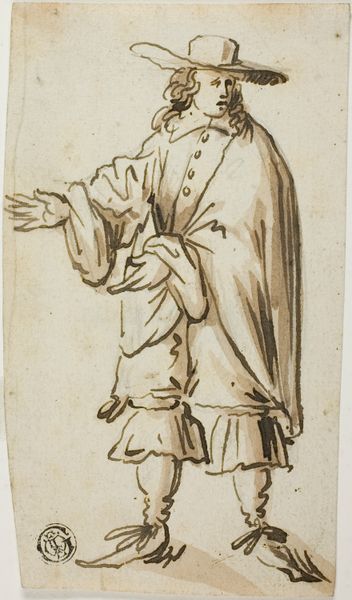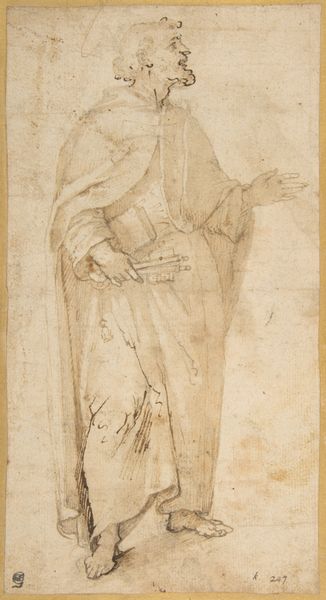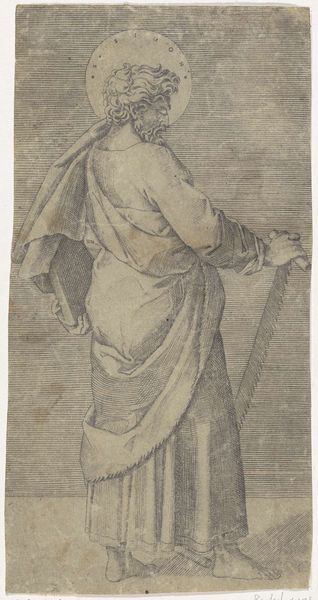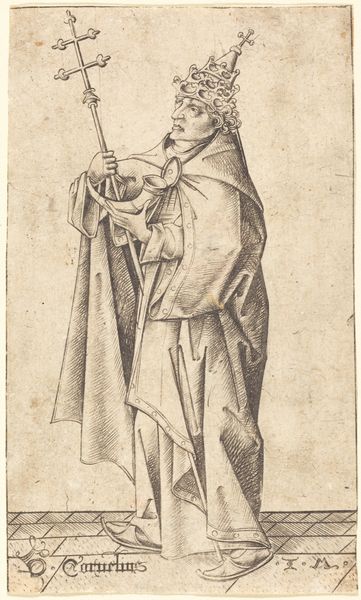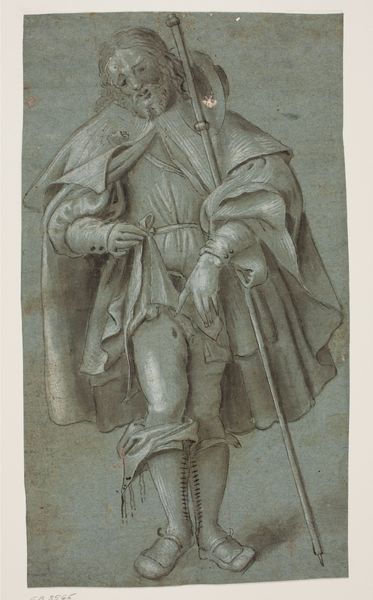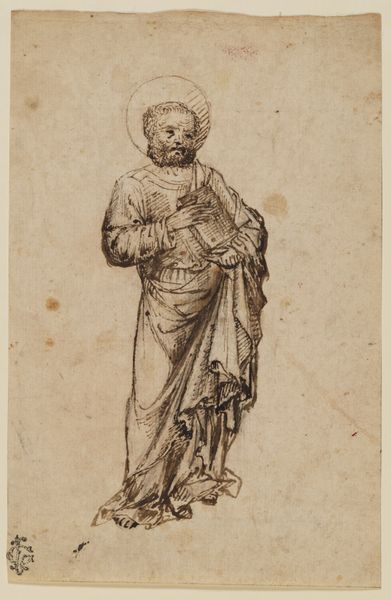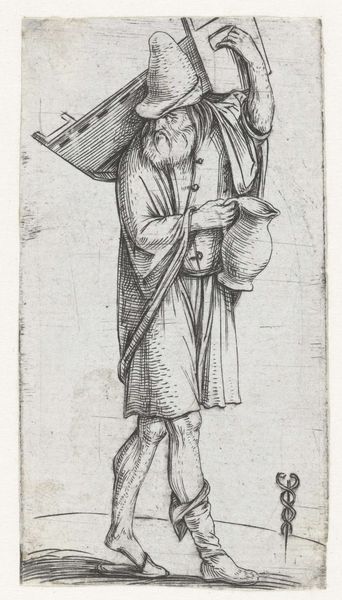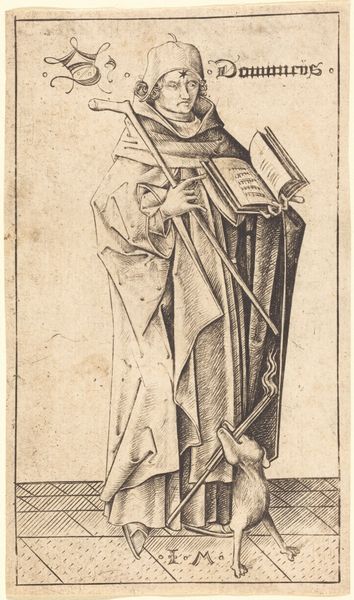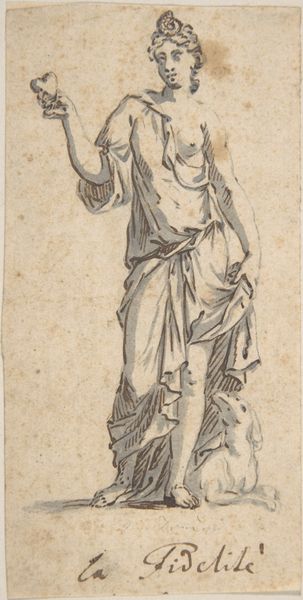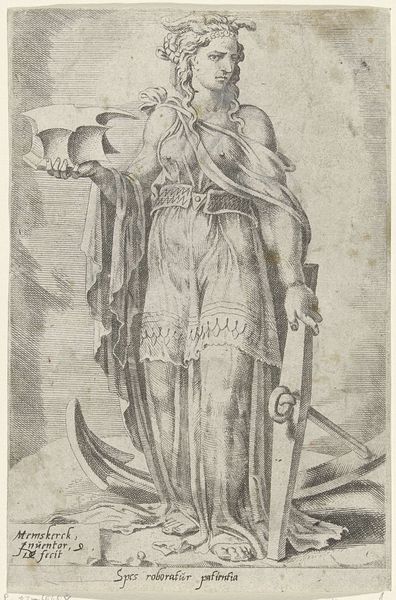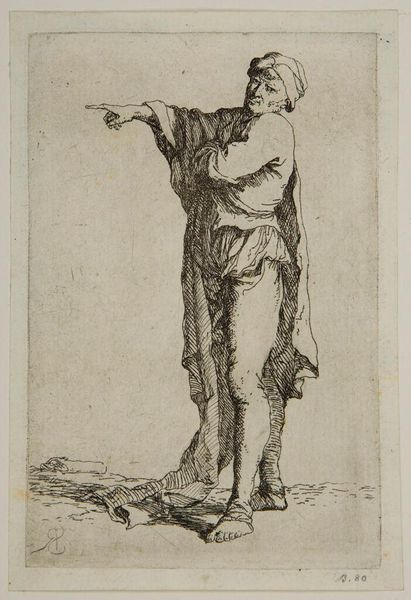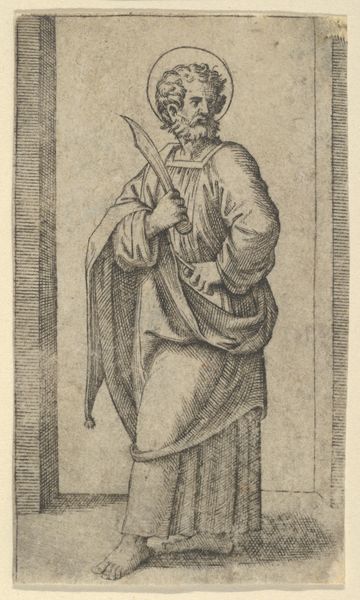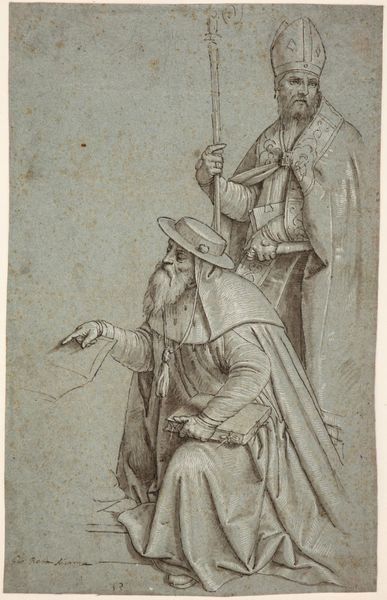
drawing, print, paper, ink, charcoal
#
portrait
#
drawing
# print
#
charcoal drawing
#
mannerism
#
figuration
#
paper
#
charcoal art
#
ink
#
coloured pencil
#
charcoal
#
history-painting
Dimensions: 157 × 100 mm
Copyright: Public Domain
Curator: I find this ink and charcoal drawing of Saint Florian, likely dating between 1600 and 1610, quite striking in its tonal range. Editor: My first impression is a somber dignity. There’s a stillness about him, a melancholic heroism in the shading and line work. I can't help but see him as a symbol of resilience amidst chaos. Curator: Notice how Turchi uses the charcoal to build up the figure, concentrating density around the armor and the face, especially the curls framing it. We also see the type of paper itself informing how the charcoal manifests. It creates texture. Editor: Right, it's impossible to divorce the art from its production. And this paper would have been a valuable commodity! Who would have had access to art making at the time? The figure himself radiates privilege but also resonates with the historical Florian, a Roman army officer who, like so many figures, stood up against state power, challenging imperial decrees and, ultimately, giving his life for his beliefs. The symbolism resonates profoundly within our current struggles against oppression. Curator: Precisely. Consider, too, how the artistic workshops of this period operated. Assistants often worked on preparatory drawings. Was this created within a larger system of labor? Was the Saint Florian character a figure of resistance that made visible and empowered those who could be described as laboring invisibly at the time? The presence of that bird reminds me of the dove, an age-old signifier for the Holy Ghost. What do you make of its connection to the Saint? Editor: To me, the bird reads as an invocation of freedom, a refusal to be constrained by earthly powers. It could reference how faith enables action. We are, of course, engaging in a long and important discussion, in terms of historical accuracy, the relationship between a historical army figure, Saint Florian's alleged faith, and the meaning of that faith, but regardless of that complex conversation it suggests to me the deep interconnections of faith, political expression, gender expression, race, and economics. It can be very tempting to dismiss a period or a theme such as 'religious art' for its lack of...relevance. Curator: Fair enough, but to bring it back to the artmaking… I am really impressed with the artist’s process in developing those intricate layers to realize Saint Florian as he comes to life before us. It reveals so much intention and purpose. Editor: Yes, it’s important to view these older artworks with contemporary eyes and questions, pushing beyond traditional readings to unveil their continued potential for dialogue and resistance. I can appreciate Turchi's craftsmanship. Curator: Well said, I will certainly be seeing Turchi's materials in a different light from now on!
Comments
No comments
Be the first to comment and join the conversation on the ultimate creative platform.
